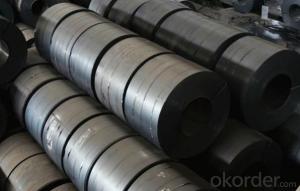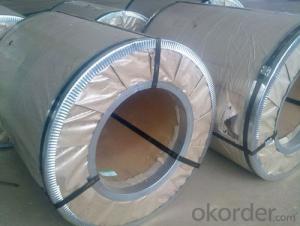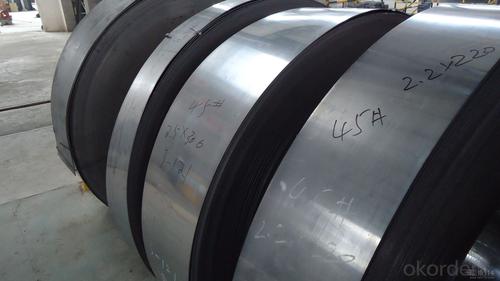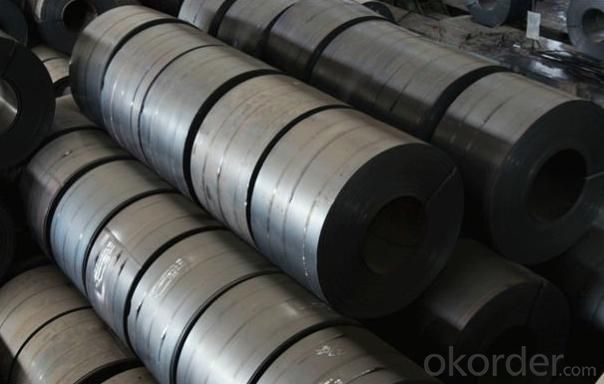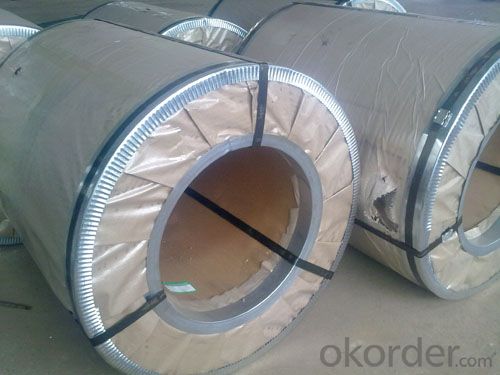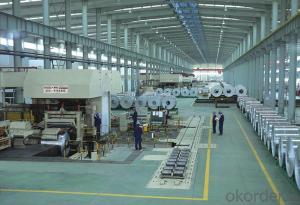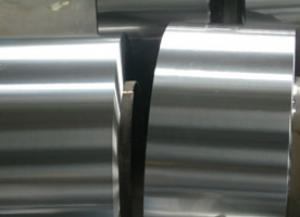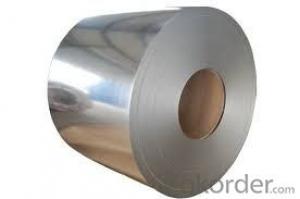Cold rolled steel coils and sheets
- Loading Port:
- Tianjin
- Payment Terms:
- TT OR LC
- Min Order Qty:
- 5 m.t.
- Supply Capability:
- 5000 m.t./month
OKorder Service Pledge
Quality Product, Order Online Tracking, Timely Delivery
OKorder Financial Service
Credit Rating, Credit Services, Credit Purchasing
You Might Also Like
Quick Details
| Standard: | AISI,ASTM,DIN,GB,JIS,JIS G3302 ASTM 653M EN10142 | Grade: | Q195~Q345 | Thickness: | 0.16mm~1.5mm,0.16-1.5mm |
| Place of Origin: |
| Brand Name: |
| Model Number: | Hot dipped zinc coating |
| Type: | Steel Coil | Technique: | Hot Rolled | Surface Treatment: | Coated |
| Application: | building and constructions | Special Use: | High-strength Steel Plate | Width: | 1250,600-1250mm |
| Length: | as required | Zinc Coating: | 30-275g/ m2 | Package: | standard seaworthy export packing or as required |
| Delivery Time: | Within 20 days after the deposit | Coil weight:: | 3-12 MT | Coil ID: | 508/610mm |
| FOB: | 780-920 | MOQ: | 50 Tons |
Packaging & Delivery
| Packaging Detail: | standard seaworthy export package |
| Delivery Detail: | 5-15days after recevied your L/c or T/T |
Specifications
Thickness: 0.12-1.5mm
Coil width:600-1250mm
One weight: 2.0-6.0MT
Surface finish : 30-275g/m2 zinc
| Description | Prepainted color coated steel coil | |
| Executive Standard: | JIS G3302, SGCC / ASTM 653M CQ/ EN10142 DX51D+Z | |
| Material | CGCC, CGCH ,CGC340-CGC570, CGCD1-CGCD3 | |
| Thickness | 0.16-1.5mm | |
| Sizes | Width | 600-1250mm |
| Coil ID | 508/610mm | |
| Coil weight: | 3-12 MT | |
| Zinc Coating | 30-275g/ m2 | |
| Color: | RAL No. or customers' sample color | |
| Painting | Topside: 5microns primer+15microns polyester, Backside: 5-7microns primer epoxy | |
| Price | USD780-840/Mt | |
| Payment Term | 1) Payment term : T/T ;L/C;D/P 2) Trade Terms : FOB / CFR /CIF 3) Minimum quantity of order : 5 MT | |
| Package | standard seaworthy export packing or as required | |
| Delivery Time | Within 20 days after the deposit | |
| Application | office furniture, household electric appliances, food package | |
| Trademark: | ||
| Origin: | China | |
| Contacts | ||
| Export Markets: | North America, South America, Eastern Europe, Southeast Asia, Africa, Oceania, Mid East, Eastern Asia, Western Europe | |
- Q: I'm trying to bend stainless steel spoons, forks knives etc. for an art project. Will heating them help bend them into certain shapes or will heat only strengthen it? What is the best way to bend stainless steel?
- We are regular buyers of such bends.
- Q: Is Carbon Steel strong for swords?
- Yes. Most high quality knives are made of carbon steel versus say stainless steel. High strength carbon steel holds an edge well and is strong.
- Q: How much does a steel coil weigh?
- The weight of a steel coil can vary depending on its size, thickness, and type of steel used. Generally, a standard steel coil can weigh anywhere from a few hundred pounds to several thousand pounds.
- Q: Suppose you made a sword out of diamond (just follow me here, it's only theoretical). Would it be lighter than a sword of the same size made out of steel?
- The weight of steel is dependent among what kind of steel, shape, length, width, thickness a 5mm by 5mm ball of carbon steel would wiegh 1.69969 g a same size diamond weighs .79 carats equivelent to 1.5 grams So the basic answer is, yes, diamond is lighter than steel, but barely
- Q: What are the common methods of storing steel coils in warehouses?
- The common methods of storing steel coils in warehouses include stacking them on pallets or racks, using coil cradles or coil saddles to hold them in place, or utilizing specialized coil storage systems such as coil racks or coil cranes.
- Q: On how to reinforce steel coils in a container
- They can be strapped to the floor with wire ropes and locks
- Q: How are steel coils used in the production of electrical relays?
- Steel coils are used in the production of electrical relays as they provide the necessary magnetic field required for the relay to function. When an electric current passes through the coil, it generates a magnetic field, which then attracts or repels the relay's switch mechanism. This coil-based mechanism allows relays to control the flow of electricity in various electrical circuits.
- Q: I expect that I will be questioned about my knowledge in methoding for steel castings, in a interview. I dont know about it. Can someone explain me in simple language and give me some links, like how I can explain methoding for steel castings.....key points...help please...so that i will pass the interview as if I have experience in methoding....thanks
- It is very difficult to define Methoding of Steel castings by one sentence. Actually it encompasses the total casting process. Normally it would mean a) Pattern design i.e. what type of pattern it would be- wooden, metallic, split or full, loose or fitted on a match plate or any other, how will be the parting line. b) Design of the gating system. c) Design of risering i.e. numbers, size and location of risers. d) Design of molding process i.e. sand system to be used, mold box size. But to do justice to the above mentioned activities, you need to consider other parameters of the casting process such as chemical composition, solidification characteristics, pouring temperature, pouring time, knock out time etc. As I said Methoding of Steel castings means designing of the total casting process from inception to final product.
- Q: How do steel coils contribute to the aerospace industry?
- Steel coils contribute to the aerospace industry by being used in the manufacturing of various aircraft components such as engine parts, landing gear, and structural elements. The high strength and durability of steel make it a preferred material for these applications, ensuring the safety and reliability of aircraft. Additionally, steel coils are also used in the production of specialized tools and equipment required for aerospace manufacturing processes.
- Q: Can steel coils be used in outdoor applications?
- Yes, steel coils can be used in outdoor applications. Steel is known for its durability and resistance to harsh environmental conditions, making it suitable for outdoor use. Additionally, steel coils are often coated or treated to further enhance their corrosion resistance, making them well-suited for various outdoor applications such as construction, automotive, and manufacturing industries.
Send your message to us
Cold rolled steel coils and sheets
- Loading Port:
- Tianjin
- Payment Terms:
- TT OR LC
- Min Order Qty:
- 5 m.t.
- Supply Capability:
- 5000 m.t./month
OKorder Service Pledge
Quality Product, Order Online Tracking, Timely Delivery
OKorder Financial Service
Credit Rating, Credit Services, Credit Purchasing
Similar products
Hot products
Hot Searches
Related keywords

